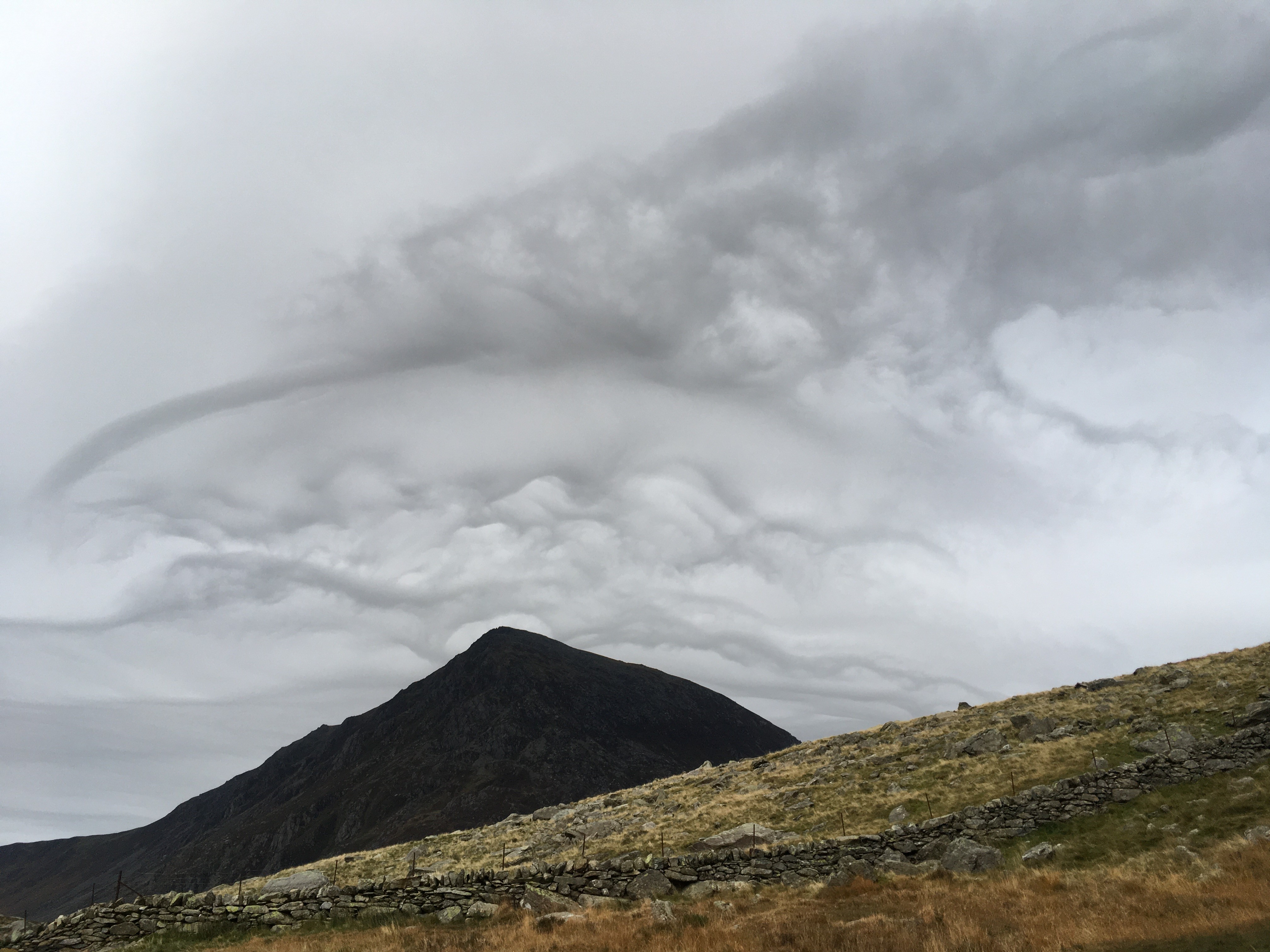

New cloud type spotted over Snowdonia
These dramatic clouds are the newest cloud type in over 50 years and were spotted over Snowdonia, UK this weekend.
Asperitas formations are incredibly rare and look like rough, sea waves in the sky. The base of these clouds is usually between 4,000 - 10,000ft (1 – 3km) and as with all cloud names, they are derived from Latin with aspero meaning ‘roughness’. At first glance, or when doing research, they may appear to fall into the undulatus clouds category, however they are more chaotic and have less horizontal structure compared to undulatus clouds.
Although unstable atmospheric conditions are required, it is unknown exactly how the wave-like pattern that define asperitas form. One explanation is that the sightings are associated after convective thunderstorms. Another theory suggests that they were firstly mammatus clouds that began to descend and then a change in wind direction with height caused the wavy patterns.
In terms of the weather associated with asperitas clouds, they do not produce any precipitation, but the state of the atmosphere when these clouds are present could allow other precipitation-producing clouds to form and have been linked to thunderstorms occurring afterwards.
Although asperitas are not new to the sky, officially recognising them as their own cloud type is just in the process of being accepted. Back in 2006, The Cloud Appreciation Society suggested that asperitas clouds were labelled as their own cloud type after receiving photographs from around the world that they felt just didn’t fit within the existing cloud types. After several years, the World Meteorological Organisation (WMO) have now accepted this proposal, and asperitas will be added to the 2017 International Cloud Atlas; the first new cloud type since 1951, when cirrus intortus was accepted.
The clouds were observed at around 1600 on Sunday 13 November 2016 over the Ogwen Valley in Snowdonia National Park, Wales, with the photo captured by Patrick Hickie, a mountaineer instructor.
Patrick said when his group finished the climb at 750m altitude, close to 3pm, at which point they were just at the cloud base, although it was slowly beginning to lift and clear. They then descended back to the valley and by about 4pm, when the photo was taken, the low cloud had lifted and cleared and the air was incredibly still and calm. The clouds were swirling very slowly and were very unusual - so out came the camera! Patrick had to leave the area shortly afterwards, but heard from others who live locally that it did start to rain a little while later. The photograph was captured on a smartphone and no filters or other enhancement techniques have been used to alter the photograph - this was exactly as taken, although Patrick has added the photo doesn’t quite do the clouds justice!


